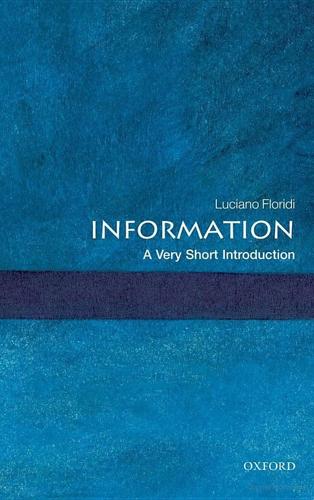
Information: A Very Short Introduction
by
Luciano Floridi
Published 25 Feb 2010
So, could one imagine some logically possible mechanism whereby entropy could be defeated just in theory, although still never in practice? Enter Maxwell's demon. James Clerk Maxwell (1831-1879), the father of classical electromagnetic theory, devised his thought experiment in order to clarify what he saw as the statistical nature of the second law. In his Theory of Heat, he invited the reader to imagine the following scenario (see Figure 12). A container, filled with some gas, is divided into two parts, A and B. In the division, there is a microscopic hole, and a being, later to be known as Maxwell's demon, can open it or close it by means of a trapdoor. He monitors the molecules bouncing around at different speeds.
…
If no information is ever erased, all his other computations may in principle be achieved in ways that are thermodynamically reversible, requiring no release of heat and hence no increase in entropy. We would end with a draw: proving that the system does not run for free, but failing to make the demon pay for the energy bill. Bloated with ever increasing amounts of recorded data, the demon would represent an ever-expanding space of memories. 12. Maxwell's demon Our sceptic may have a last objection. Maxwell's demon can see and manipulate single particles. If it were a quantum computer, couldn't this provide a solution to the amount of informational resources needed to defeat the second law of thermodynamics? The short answer is no; the long answer requires a new section. Quantum information Binary data are encoded, stored, and processed by allowing each bit to be only in one fully determined, definite state at a time.
…
I am very grateful to the Akademie der Wissenschaften in Gottingen, for the privilege of being elected Gauss Professor during the academic year 2008-9, and to the University of Hertfordshire, for having been generous with my teaching schedule while visiting Gottingen and completing this book. 1 A typical information life cycle 5 2 A map of information concepts 20 3 Analogue, digital, and binary data 24 4 Types of data/ information 30 5 Environmental data/ information 32 6 Information as semantic content 34 7 The mathematical theory of communication (MTC) 38 8 Communication model 39 9 Factual semantic information 49 10 Virtual information in natural deduction 57 11 Physical information 61 12 Maxwell's demon 64 13 Biological information 74 14 DNA and the genetic code 78 15 Genetic information 81 16 Abstract scheme of a neuron 83 17 Economic information 89 18 A simple application of Bayes' theorem 101 19 The 'External' R(esource) P(roduct) T(arget) Model 104 20 The 'Internal' R(esource) P(roduct) T(arget) Model 110 Table 1 The General Definition of Information (GDI) 21 Table 2 Decimal and binary notations of positive integers 27 Table 3 Example of binary encoding 28 Table 4 Environmental information 33 Table 5 Examples of communication devices and their information power 41 Table 6 The definition of factual semantic information 50 Table 7 The normal form of a typical prisoner's dilemma 94 The goal of this volume is to provide an outline of what information is, of its manifold nature, of the roles that it plays in several scientific contexts, and of the social and ethical issues raised by its growing importance.
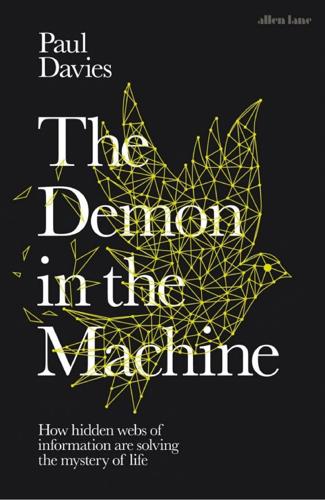
The Demon in the Machine: How Hidden Webs of Information Are Finally Solving the Mystery of Life
by
Paul Davies
Published 31 Jan 2019
Chen et al., ‘Structural diversity of bacterial flagellar motors’, EMBO Journal, 30 (14), 2972–81 (2011); doi: http://dx.doi.org/10.1038/emboj.2011.186 Kensaku Chida et al., ‘Power generator driven by Maxwell’s demon’, Nature Communications, 8:15301 (2017) Nathanaël Cottet et al., ‘Observing a quantum Maxwell demon at work’, Proceedings of the National Academy of Sciences, vol. 114, no. 29, 7561–4 (2017) Alexander R. Dunn and Andrew Price, ‘Energetics and forces in living cells’, Physics Today, vol. 68, no. 2, 27–32 (2015) George Dyson, Turing’s Cathedral: The Origins of the Digital Universe (Vintage, 2012) Lin Edwards, ‘Maxwell’s demon demonstration turns information into energy’, PhysOrg.com, 15 November 2010; https://phys.org/news/2010-11-maxwell-demon-energy.html Ian Ford, ‘Maxwell’s demon and the management of ignorance in stochastic thermodynamics’, Contemporary Physics, vol. 57, no. 3, 309–30 (2016) Jennifer Frazer, ‘Bacterial motors come in a dizzying array of models’, Scientific American, 16 December 2014 Gregory P.
…
The first glimmerings of an answer came, as it happened, 150 years ago in the ferment of the Industrial Revolution, and it came from a subject that had less to do with biology and more with the nuts-and-bolts field of mechanical engineering. 2 Enter the Demon ‘Could life’s machines be Maxwell demons, creating order out of chaos …?’ – Peter Hoffmann1 In December 1867 the Scottish physicist James Clerk Maxwell penned a letter to his friend Peter Guthrie Tait. Though little more than speculative musing, Maxwell’s missive contained a bombshell that still reverberates a century and a half later.
…
Can a string of zer0s really run an engine? Can information itself serve as a fuel, like petrol? And is this just a collection of mind games, or does it connect to the real world? DEMONS FOR DOLLARS: INVEST NOW IN APPLIED DEMONOLOGY One hundred and forty years after Maxwell first floated the idea, a real Maxwell demon was built in the city of his birth. David Leigh and his collaborators at Edinburgh University published the details in a paper in Nature in 2007.15 For over a century the idea of anyone actually building a demon seemed incredible, but such have been the advances in technology – most significantly in nanotechnology – that the field of applied demonology has at last arrived.fn16 The Leigh group built a little information engine consisting of a molecular ring that can slide back and forth on a rod with stoppers at the end (like a dumbbell).
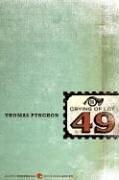
The Crying of Lot 49
by
Thomas Pynchon
Published 1 Jan 1966
From a drawer he produced a Xeroxed wad of papers, showing a box with a sketch of a bearded Victorian on its outside, and coming out of the top two pistons attached to a crankshaft and flywheel. “Who's that with the beard?” asked Oedipa. James Clerk Maxwell, explained Koteks, a famous Scotch scientist who had once postulated a tiny intelligence, known as Maxwell's Demon. The Demon could sit in a box among air molecules that were moving at all different random speeds, and sort out the fast molecules from the slow ones. Fast molecules have more energy than slow ones. Concentrate enough of them in one place and you have a region of high temperature. You can then use the difference in temperature between this hot region of the box and any cooler region, to drive a heat engine.
…
“Tell them down at the post office, you'll find yourself in a mailbag headed for Fairbanks, Alaska, without even a fragile sticker going for you.” “It's mental work,” Koteks said, “But not work in the thermodynamic sense.” He went on to tell how the Nefastis Machine contained an honest-to-God Maxwell's Demon. All you had to do was stare at the photo of Clerk Maxwell, and concentrate on which cylinder, right or left, you wanted the Demon to raise the temperature in. The air would expand and push a piston. The familiar Society for the Propagation of Christian Knowledge photo, showing Maxwell in right profile, seemed to work best.
…
She did gather that there were two distinct kinds of this entropy. One having to do with heat-engines, the other to do with communication. The equation for one, back in the '3o's, had looked very like the equation for the other. It was a coincidence. The two fields were entirely unconnected, except at one point: Maxwell's Demon. As the Demon sat and sorted his molecules into hot and cold, the system was said to lose entropy. But somehow the loss was offset by the information the Demon gained about what molecules were where. “Communication is the key,” cried Nefastis. “The Demon passes his data on to the sensitive, and the sensitive must reply in kind.
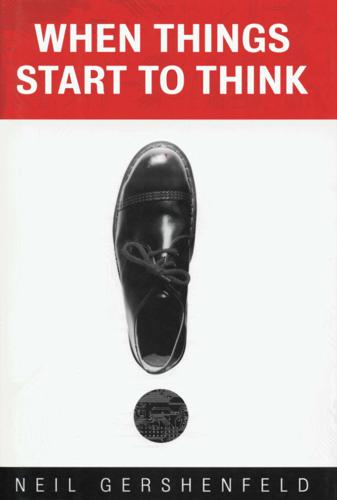
When Things Start to Think
by
Neil A. Gershenfeld
Published 15 Feb 1999
Repeating this procedure would provide a perpetual-energy machine, a desirable if impossible outcome. Many people spent many years unsuccessfully trying to exorcise Maxwell's demon. An important step came in 1929 when Leo Szilard reduced the problem to its essence with a single molecule that could be on either side of a partition. While he wasn't able to solve the demon paradox, this introduced the notion of a "bit" of information. Szilard's one-bit analysis of Maxwell's demon provided the inspiration for Claude Shannon's theory of information in 1948. Just as the steam engine powered the Industrial Revolution, electronic communications was powering an information revolution.
…
He created a theory of information that could find the performance limit of a communications channel. His theory led to a remarkable conclusion: as long as the data rate is below this capacity, it is possible to communicate without any errors. This result more than any other is responsible for the perfect fidelity that we now take for granted in digital systems. Maxwell's demon survived until the 1960s, when Rolf Landauer at IBM related information theory back to its roots in thermodynamics and showed that the demon ceases to be a perpetual-motion machine when its brain is included in the accounting. As long as the demon never forgets its actions they can be undone; erasing its memory acts very much like the cycling of a piston in a steam engine.
…
(author of book on nuclear magnetic resonance), 155 expectations from computers, 4 eyeglasses, 58 factoring, 15 6 fashion and wearable computers, 55-56 Federal Communications Commission (FCC), 99 FedEx,47-48,203-4 Festo, 69 Feynmann, Richard, 158, 161, 166-67 First Amendment, 99 "Fish" circuit board, 144 Fletcher, Richard, 153 flexible work groups, 180, 192 focus groups, 75 Ford Motor Company, 78 Frankfurt book fair, 13 Fredkin, Ed, 132 freedom of speech and the press, 98-99 free markets versus central planning, 88-89 functional magnetic resonance imaging, 140-41 furnace, information, 201 furniture that can see, 169-70, 179, 193,202 futures traders, 77-78 fuzzy logic, 107, 109, 120-21 genome, editing the, 212 Global Positioning System (GPS) receivers, 152, 166, 177-78 GM, 78 gold standard, 79 Gore, AI, 60 Government Performance and Results Act (GRPA), 173-74 GPS receivers, 152, 166, 177-78 Grinstein, Geoff, 165 groupware, 59 Grover, Lov, 162 INDEX Gutenberg and movable metal type, 18-19 Hamanaka, Yasuo, 77 Harvard University, 195 Hawking, Stephen, 74 Hawley, Michael, 54-55, 195, 203 health care industry, 204 Helmholtz, Hermann, 39 Hewlett Packard, 52, 203 high-definition television, 6 Hilbert, David, 127 holograms, 142 Human-Computer Interaction community, 140 IBM, 63, 128, 159, 160, 165, 176 "Deep Blue," 129-30 Iguchi, Toshihide, 77, 86 Imitation Game, see Turing test implants, 211-12 industry: digital revolution and, 192 media Lab and, 107, 169-84, 202-7 research and development and, see research and development wearable computers and, 47-48 infant seats, device to disable, 170-71, 180 inflight videos, 111 Information Theory, 128 Institute for Theoretical Physics, 160 insurance, 209 Intel, 78, 156 intellectual property, 181, 194 intelligence agencies, quantum computers and, 159 interfaces, computer, 140-47, 156 mind control, 140-41 speech recognition, 140 3D graphics, 141-42 Windows-and-mice, 106, 139, 147 Internet and World Wide Web, 3-4, 6-7,9-10,58-59,213 attempts to regulate, 99 INDEX birth of, 79-80 developing countries and, 210-11 educational implications of, 193 electronic commerce and, 80-81 IP protocol, 89 search engines, 134 Things That Think and, 207 IRCAM, 33 Ishii, Hiroshi, 145 Jacobson, Joseph, 15-17, 72, 202 James II, King, 98 jargon, technology, 107-21 Jobs, Steve, 139 Josza, Richard, 158 Kasparov, Gary, 129, 133, 134-35 Kavafian, Ani, 49-50 Kay, Alan, 137, 138-39 Kaye, Joseph, 9 Kennedy administration, 185 Kepler, Johannes, 113 Land, Edwin, 187 Landauer, Rolf, 176, 177 laptop computers: backlighting of screen, 14 books versus, 14-15 complicated instructions for running, 97-98 invention of, 137 Leeson, Nick, 77, 86 Legoland, 68 Legos, 68-69, 71, 73, 146--47, 193 Leibniz, Gottfried, 131 Leo X, Pope, 95, 96 libraries and the electronic book, 20-23 Lind, James, 210 Lippman, Andy, 203 Lloyd, Seth, 158, 162 LOGO programming language, 138, 147 Lorenz, Edward, 113, 114 Lotus, 101 + 221 Lovelace, Lady Ada, 125 Luther, Martin, 95-97, 106 Luthiers, 39, 41 machine tools, 71, 75 characteristics of, 64 Machover, Tod, 33, 49, 169, 203, 206 Maelzel, Johann, 124 magnetic resonance imaging (MRI), 154 magnetoencephalography (MEG), 140--41 mainframes, 75, 151 characteristics of early, 63 Mann, Steve, 45--46, 47, 57-58 Manutius, Aldus, 20 Margolus, Norman, 132 Marketplace:Households product, 101 Massachusetts Institute of Technology (MIT), 65, 113, 128-29, 132, 138, 158, 195 Architecture Machine Group, 186 Media Lab, see Massachusetts Institute of Technology (MIT) Media Lab Massachusetts Institute of Technology (MIT) Media Lab, 6, 15, 33, 45-50, 55-56, 57, 68-69, 105, 110, 146--47, 179, 180-84, 185-97 attempts to copy, 194 Digital Life, 203 hidden purpose of, 185-86 industry and, 107, 169-71, 180-84, 202-7 News in the Future, 202-3 organization of, 194, 197 origins of, 185-86 student education in, 187-97 Things That Think, 202-7 unique qualities of, 194-95 Mathews, Max, 36 mature technologies, 10 Maxwell's demon, 175-76 222 Memex, 139 MEMS (Micro-Electro-Mechanical Systems), 72 microencapsulation, 15-16 micropayments, 82 Microsoft, 78, 139, 158, 203 microtubules, 162-63 MIDI, 90 milling machine, 66 mind control as computer interface, 140-41 minicomputers, 52, 138 Minsky, Marvin, 33, 117, 135, 2012 MIT, see Massachusetts Institute of Technology (MIT) modems, 188 money: distinction between atom-dollars and bit-dollars, 83-85 gold standard, 79 pennies, 82 smart money, see smart money as tangible asset, 79, 91 Moog, Bob, 30 Moog synthesizer, 30 Moore, Gordon, 156 Moore's law, 155-57, 163 Motorola, 99-100, 203 mouse, 106, 139, 142-43 multimedia, 109, 110-11 music and computers, 27-44 competing with a Stradivarius, 32-33,39-42 critical reaction to digital instruments, 37-38 designing and writing for smart instruments, 27-44, 143-44, 187 enhancing technology of the cello, 27-29 first electronic music ensemble, 31 limits of instruments and players, 32 MIDI protocol, 90 physics of musical instruments, 40 + INDEX purposes of smart instruments, 33, 42-43 synthesizers, 30-31 Mysterzum Cosmographicum, 113 nanotechnology, 161 Nass, Clifford, 54 National Highway Traffic Safety Administration, 170 National Science Foundation, 172-73, 174, 178 NEC, 170-71 Negroponte, Nicholas, 183, 185, 186 Netscape, 78 networking, 59-60 open standards for, 90 neural networks, 107, 109, 117-20, 164 Newton, Isaac, 131 Newton's theory of gravitation, 114 Nike, 202, 203 Ninety-five Theses, 96, 98 Nixon, Richard, 79 nuclear bombs, 171, 172, 178-79 nuclear magnetic resonance (NMR), 154-55, 160 numerically controlled (NC) mills, 66, 67-68 Office of Scientific Research and Development, 172 Oppenheimer, j.
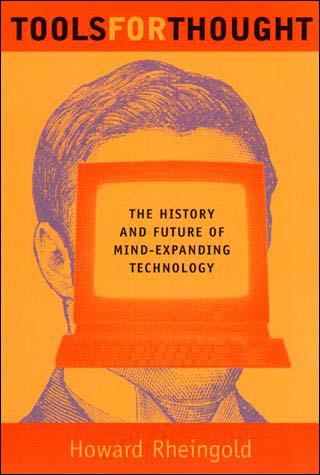
Tools for Thought: The History and Future of Mind-Expanding Technology
by
Howard Rheingold
Published 14 May 2000
James Clerk Maxwell, yet another nineteenth-century scientist, proposed a paradox concerning this elusive quality called entropy, which seems to relate such intuitively dissimilar measures as energy, information, order, and predictability. The paradox became infamous among physicists under the name "Maxwell's demon." Consider a container split by a barrier with an opening small enough to pass only one molecule at a time from one side to another. On one side is a volume of hot gas, in which the average energy of the molecules is higher than the average energy of the molecules in the cold side of the container.
…
Taken far enough, this policy could mean that the hot side would get hotter and the cold side would get colder, and entropy would decrease instead of increase without any energy being added to the system! In 1922, a Hungarian student of physics by the name of Leo Szilard (later to be von Neumann's colleague in the Manhattan project), then in Berlin, finally solved the paradox of Maxwell's demon by demonstrating that the demon does indeed need to contribute energy to the system, but like a good magician the demon does not expend that energy in its most visible activity -- moving the gate -- but in what it knows about the system. The demon is a part of the system, and it has to do some work in order to differentiate the hot and cold molecules at the proper time to open the gate.
…
Somehow, living cells manage to take the hodgepodge of molecules found in their environment and arrange them into the substances necessary for sustaining life of the organism. From a disorderly environment, living creatures somehow create their own internal order. This remarkable property now sounds suspiciously like Maxwell's demon. The answer, as we now know, is to be found in the way the DNA molecule arranges its elements -- doing so in such a way that the processes necessary for metabolism and reproduction are encoded. The "negative entropy" that Schrodinger says is the nourishment of all life is information, and Shannon showed exactly how such coding can be done -- in molecules, messages, or switching networks.

Physics in Mind: A Quantum View of the Brain
by
Werner Loewenstein
Published 29 Jan 2013
This imposes huge information demands on the neuron web—and under the stern Second Law, these demands can be neither postponed nor fobbed off. There is thus a considerable influx of extrinsic information to that end, though it all runs automatically and smoothly, thanks to whole armies of molecular Maxwell demons beavering away in the dendrite membranes and silently paying the thermodynamics price for us (see chapter 12). What the Eyes Tell the Brain Thus, the streamlining of sensory information in the brain is an active process, which is why I called it censorship, and I know of none more strict.
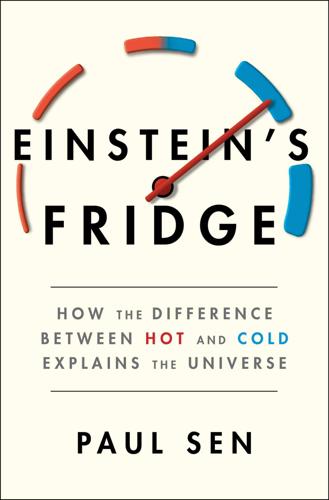
Einstein's Fridge: How the Difference Between Hot and Cold Explains the Universe
by
Paul Sen
Published 16 Mar 2021
But his paper is the first to claim that processing bits of information must dissipate heat or else we could build perpetual motion machines in defiance of the laws of thermodynamics. What’s remarkable, too, is that Szilard wrote his paper in 1929, decades before bits were used in global communication networks and before people understood how important they were to the transmission and storage of information. Over the next three or so decades, the Szilard/Maxwell demon lurked in the shadows; scientists regarded it as an intriguing puzzle but one of little relevance. The few scientific papers over this period that did mention the demon followed Szilard’s reasoning. They speculated on what kind of apparatus a demon might use to measure the position of a molecule and concluded, much as Szilard had done, that any such system will dissipate enough heat to balance the entropy decrease resulting from the piston as it lifts a weight.

Human Frontiers: The Future of Big Ideas in an Age of Small Thinking
by
Michael Bhaskar
Published 2 Nov 2021
In the paper A Dynamical Theory of the Electromagnetic Field, a seven-parter introducing what are now known as Maxwell's equations, he displayed the full power of this new physics: an abstracted approach showing how the relationships between electricity, magnetism and light all flowed from the laws of dynamics. Not until twenty years later did Heinrich Hertz produce and detect electromagnetic waves, confirming Maxwell's theory. Again, Maxwell was ahead of his time; his theory had to wait for experimental validation, now the common pattern in physics. His thought experiment – Maxwell's Demon – is one of the most influential in the history of science. Maxwell was also instrumental in standardising a system of units for the study of electricity and did early work on topology, while his research on machinery, control and feedback helped found the field of cybernetics in the 1940s. To top it off, he was the inaugural director of Cambridge University's Cavendish Laboratory.

Turing's Cathedral
by
George Dyson
Published 6 Mar 2012
“As examples of the situation we have in mind,” explained Ulam, “assume a rocket cruising between the Sun and Jupiter, i.e., in an orbit approximately that of Mars.… The question is whether, by planning suitable approaches to Jupiter and then closer approaches to the sun, it could acquire, say, 10 times more energy.… By steering the rocket, one can to some modest extent acquire the properties of a Maxwell demon … to shorten by many orders of magnitude the time necessary for acquisition of very high velocities.”68 “I remember Stan talking about being able to make a Maxwell’s demon, that it could be a possible physical thing,” Ted Taylor recalls. The required computational intelligence, viewed as a major obstacle in 1958, would be the least of the obstacles today.

The Year's Best Science Fiction: Twenty-Sixth Annual Collection
by
Gardner Dozois
Published 23 Jun 2009
“It felt pretty solid to me.” “Solid but still breakable.” “Why did you dive to the floor?” “Just silly superstition. It’s bad luck to have this end point toward you.” Jack gestured toward the muzzle. “And it’s good luck to be on this end.” He gestured toward the butt, then tried to make a joke. “Like there’s a Maxwell demon in the middle, batting bad luck one way and good luck the other.” “You believe that crap?” Deana asked. She was an engineer. She went out of her way to disbelieve crap. “Of course, I don’t believe it,” Jack said. “But why ask for trouble?” He took the gun back to the closet. Deana followed.